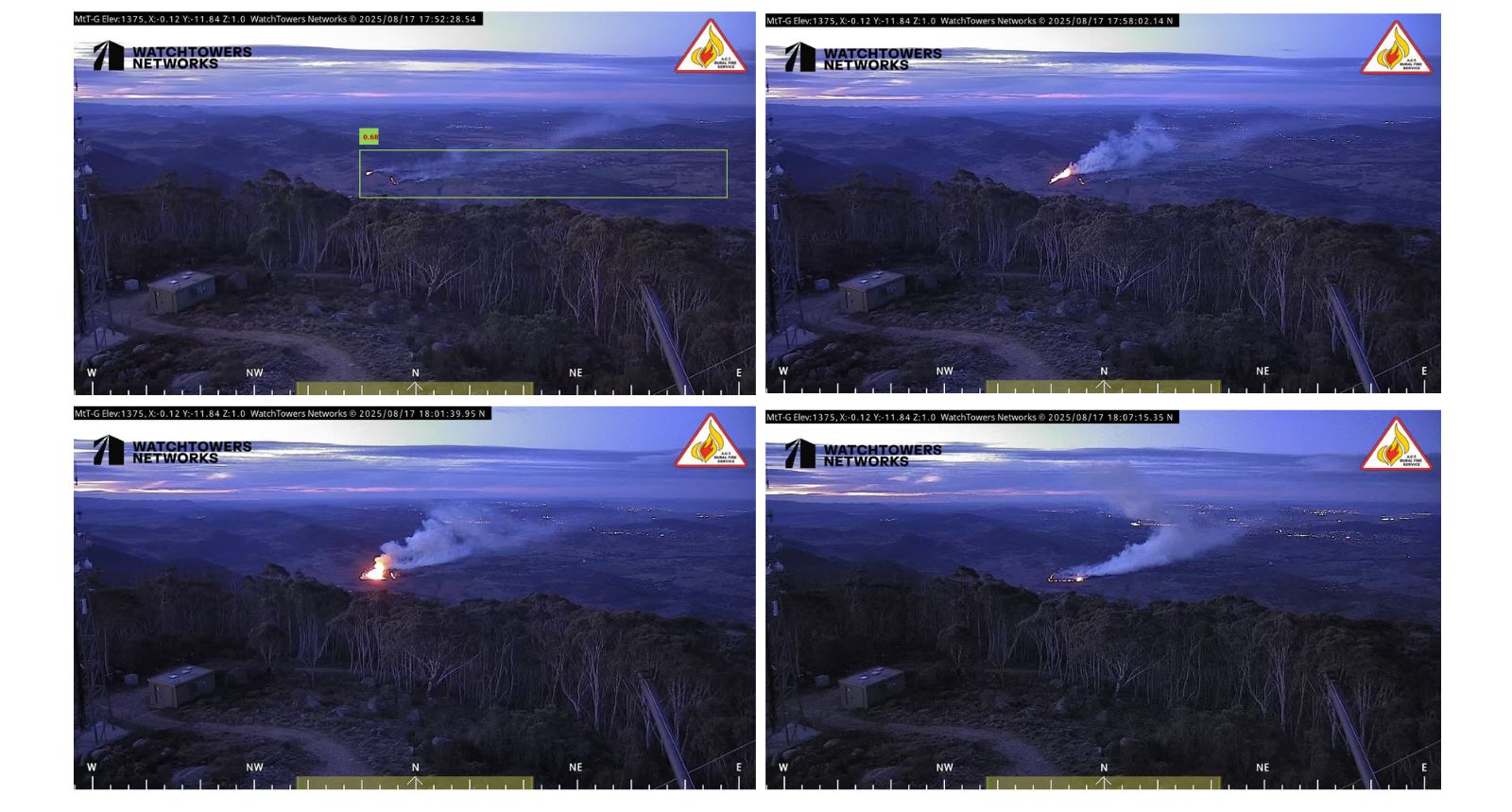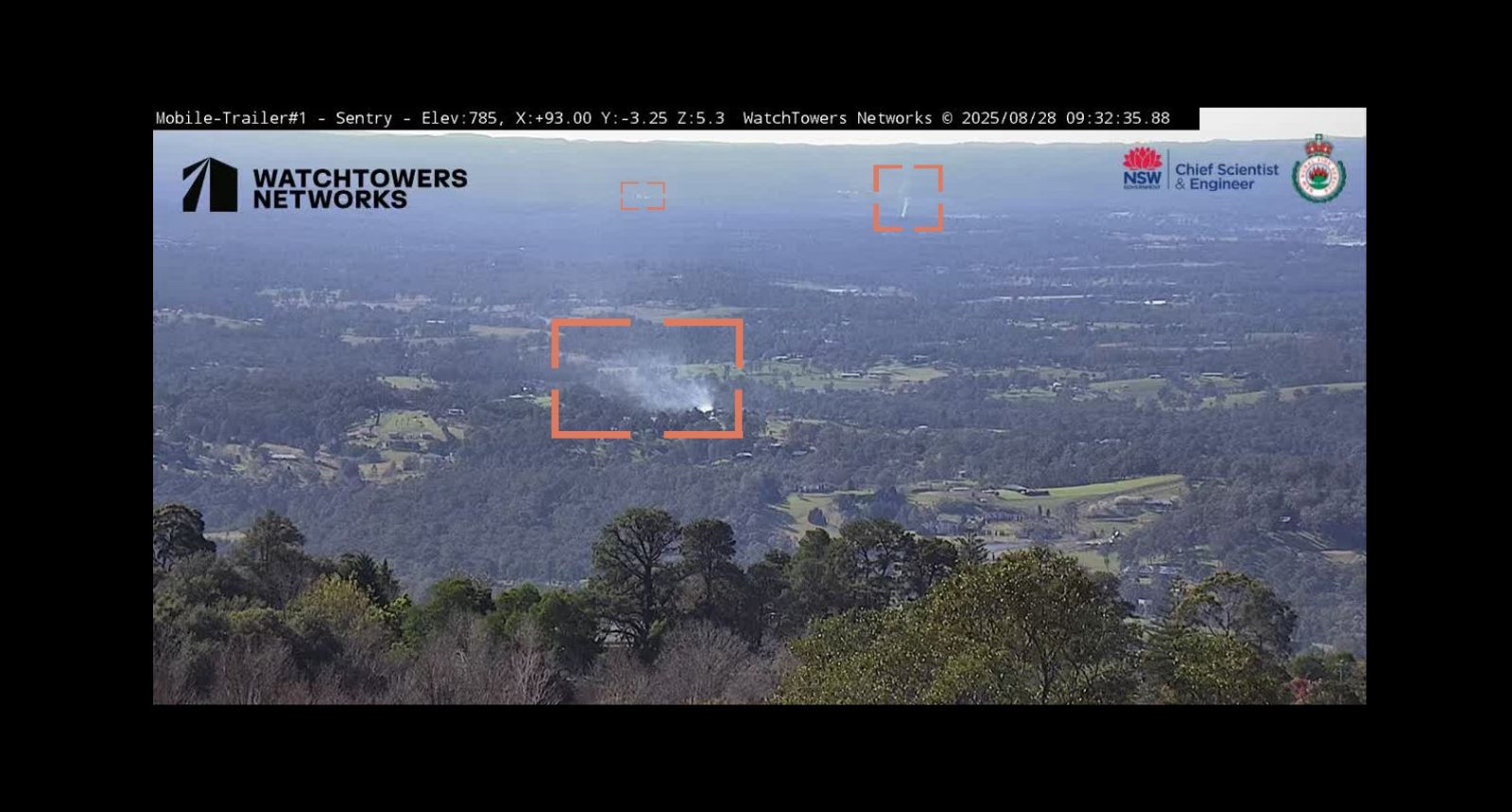The first five minutes of a bushfire can make or break the fight. In that time, flames can tear through dry grass and the wind can swing without warning — and before you know it, the fire has doubled in size. Most fires are only reported once someone spots smoke and calls triple zero. Out in rural or remote areas, that can be several minutes after the fire has already taken hold.
Those minutes matter. They can be the difference between a quick containment and a fire that lasts for days or even weeks. With the right technology in place, smoke can be detected and confirmed almost as soon as the bushfire starts. Emergency crews can see exactly what is happening and get moving before the first call reaches the switchboard.
This head start gives firefighters the best chance to protect homes and save lives, by getting ahead of the flames.
What happens before the first call to triple zero?
When a bushfire starts, it’s not always obvious what you’re looking at. A thin plume of smoke on the horizon might be dust from a passing ute or steam from a shed roof, or it could be the very first sign of trouble. Most people wait until they are sure it’s a fire before calling triple zero. In some cases, they’ll drive closer to check, which can waste valuable time.
In rural and remote areas, there might be no one nearby to see the smoke at all. Even when a call comes through, the details can be patchy. The caller might not know exactly where they are or how the fire started. While that information is being worked through, the fire keeps building.
This is the gap that costs time, and it is where faster bushfire detection can change everything.
What can you see in the first five minutes?
In dry grass or light fuels, flames can be active for several minutes before producing a visible, well-defined smoke column. Early smoke is often pale and dispersed, blending into the background or being flattened by wind, making it difficult to detect from a distance.
This visual delay means a fire can grow significantly before it is noticed, particularly in bright daylight or haze.
To show just how quickly things change, WatchTowers captured images at roughly five-minute intervals during the first 15 minutes of a blaze, pictured above. You can see the difference in the first two images alone (top row), taken just five minutes apart, as thin smoke becomes a clear column and the fire takes hold.
How fast and how far does a bushfire travel in the first 5 minutes?
A commonly used rule of thumb is that a bushfire’s forward rate of spread is around 10% of the open wind speed at 10 metres above ground. For instance, with a 25 km/h wind, this means an approximate 2.5 km/h forward spread, so the bushfire travels around 25 metres in five minutes.
Even without strong wind, grass fires in hot, dry conditions can still spread tens of metres in the first few minutes, enough to cover a significant area before detection.
Why WatchTowers makes the first five minutes count
In the first five minutes after a bushfire ignites, WatchTowers Sentinel Stations are already scanning the horizon. The “guard” camera sweeps the landscape with AI smoke detection, while the “sentry” camera zooms in on anything unusual. Trained operators can confirm a fire within moments.
If a community already has cameras or sensors in place, they can be tied into the WatchTowers Command platform. This means more eyes on the landscape, all feeding into one central view for faster, better decisions.
Once a fire is confirmed, an alert is sent instantly to emergency services, complete with live images of the fire’s location and conditions. Through WatchTowers CentralWatch, the same verified updates can also be shared with local communities, so people know what is happening and can act fast. All of this can happen before the first triple zero call is made.
What WatchTowers does in the first five minutes
- Detects smoke in real time using a dual-camera Sentinel Station system
- Confirms fires through trained operator review in seconds
- Sends verified alerts and live images to emergency services through WatchTowers Command
- Integrates with existing cameras and sensors for wider coverage and faster detection
- Shares trusted updates with local communities through CentralWatch
See early bushfire detection in action
The WatchTowers Sentinel Stations in the video are the same dual-camera fire towers described above. They keep watch day and night, pick up smoke within minutes, confirm it fast and send the alert to emergency services — often before anyone calls triple zero.
To see how the rest of the system works, watch the WatchTowers Command overview to see how verified alerts reach emergency services, and check out the CentralWatch launch announcement to learn how updates are shared with communities.


.jpg)
.jpg)